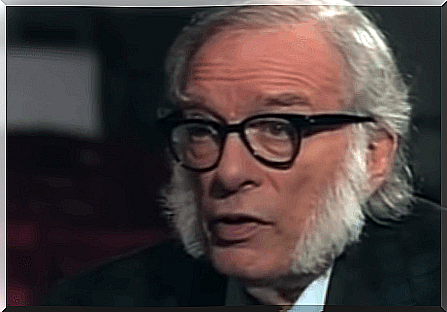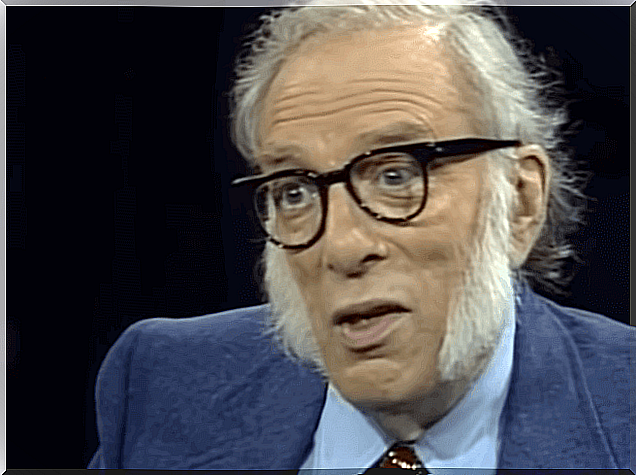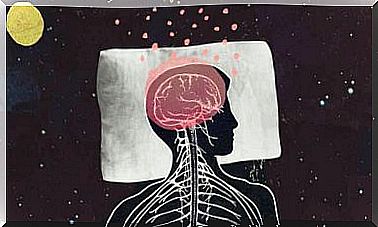Isaac Asimov, The Power Of Psychohistory

Isaac Asimov has been seen as one of the fathers of contemporary science fiction. Author of more than 500 volumes, which were written and edited by him, his work is invaluable.
Born in Russia, but trained in the United States, Asimov was always a staunch defender of applied science. In addition, he firmly believed in the power of science fiction as a precursor to real science.
Two of his most important sagas are Yo, Robot and Fundación . The first is centered on Three Laws of Robotics, an ethical code that governs a fantasy world.
But perhaps Asimov’s most popular work is the Foundation series. In it, Isaac looks at the concept of psychohistory, a scientific discipline completely invented by him. Psychohistory is the combination of mass psychology with high-level mathematics in order to predict the behavior of a society.
In this article, we will try to bring you closer to Asimov’s work and his great contributions to literature and science. How did psychohistory go from being a fictional discipline to becoming a possible branch of social psychology?

Isaac Asimov, the life of the genius
Isaac Asimov was born in Russia in 1920, although, early on, he moved to Brooklyn with his parents. In New York, Asimov proved to be an incredibly talented young man; By the age of five, Isaac had already learned to read on his own.
Soon after learning to read and write English perfectly, Isaac would also learn Yiddish, the language of the Ashkenazi Jews. At 15 years old, Isaac graduated from high school and entered Columbia University. At just 19 years old, Asimov had already graduated from college.
Like many young men in his day, just after graduating from University, Asimov would enter the ranks of the army. At this time, specifically during 1939, Isaac Asimov’s career as a science fiction writer began to develop.
During World War II, Asimov worked at the Naval Aviation Experiment Station in Philadelphia, United States. In this place, he would come into contact with other people who, like Asimov, would end up becoming renowned authors of science fiction, such as Robert Heinlein and L. Sprague de Camp.
After the war, Isaac would continue his academic career, he returned to Columbia University to do a doctorate in Biochemistry in 1948. After graduation, as a Doctor of Science, Isaac Asimov joined the faculty of Boston University.
Throughout a decade, Asimov contributed by publishing various columns in different specialized science fiction and fantasy magazines. These columns represented the development of the stories that make up his two great series: Yo, Robot y Fundación. The stories that Asimov captured in his columns had a certain relationship and, thus, they were compiled to form the titles that we know today.
Foundation and psychohistory
Inspired by the fall of the Roman Empire, the Foundation series kicks off in the last days of the Galactic Empire. Asimov presents us with a reality that, although chronologically takes place in the very distant future, is chillingly plausible.
In this future, the fall of the Empire would imply an Age of Darkness – clearly alluding to the Middle Ages – that would last 30,000 years. Hari Seldon, inventor of psychohistory, determined that this period could be shortened to just 1,000 years if the Empire’s brightest minds were brought together on a single planet. The chosen planet would be Terminus , the wise men will be in charge of storing all the knowledge acquired in recent years.
Although Asimov’s narrative is active and immersive, it is not his literary ability that interests us most at this time. The science of psychohistory is perhaps one of the greatest predictions since science fiction.
Psychohistory is basically the harmonious union between mass psychology, anthropology and high-level mathematics. A skilled psychohistorian could predict the behavior pattern of an entire society in the distant future.
Fortunately for humanity, from time to time science manages to bring to tangible reality many inventions that had already been described in science fiction literature, a good example of this can be found in the work of Jules Verne. Psychohistory seemed to be an attractive concept, but not very feasible in the real world.
However, the new century brought with it countless technological advances. The use of the internet and all the platforms that are hosted on it translates into a huge data production. But what if psychohistory used this data to become more than just a science fiction illusion?

Psychohistory and Reality: Big Data Analysis
The data we talk about can come from an immense number of sources and measure almost any phenomenon online. The amount of time a user spends on a web page, the most attractive content, the most popular colors, the lifetime of a product, the dynamics of a trend… In short, the flow of data is infinite.
Today, that data stream is known as big data or, in other words, a set of data of great variety. This data is stored at a very high speed and arrives, each time, in larger quantities.
The data big is all data generated electronically humanity and still not be processed by traditional databases.
Various social scientists, mathematicians, and engineers are working hard to find a suitable way to process all the data. Many of them acknowledge that while processing it can be laborious, the rewards are immense.
However, Asimov’s psychohistory is clear on one point: not just anyone can exercise it and discover patterns of behavior in the future. As with psychohistorians, finding true value within all the useless data can be an almost impossible job.
The process of discovery and psychohistorical calculation requires, for Asimov, a group of professionals. These professionals should specialize in data analysis, theories and social history, business, executive, and scientific backgrounds. Only a large group will be able to ask the right questions, predict behaviors, and recognize precise patterns.
Isaac Asimov was a pioneer, one of those figures in history who has managed to broaden our vision of the world, project it into the future. Through works of fiction, he has paved the way for something more tangible, more real and with practical applications.









